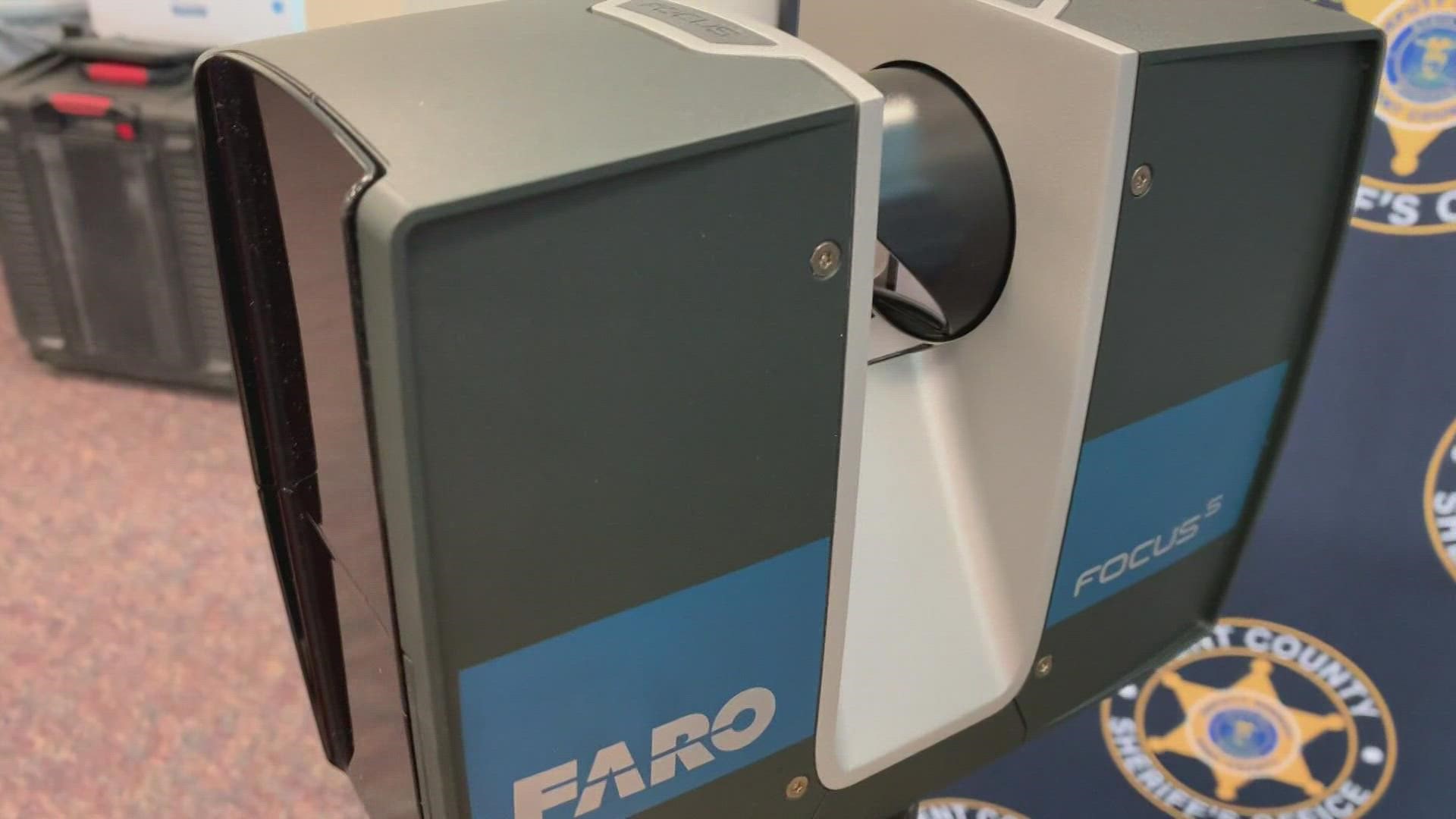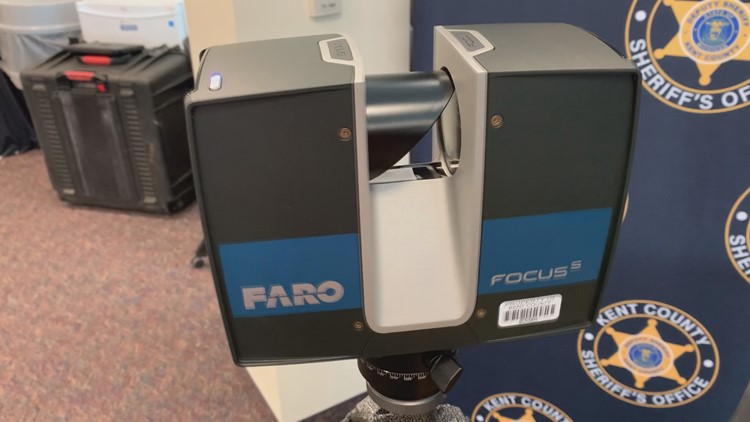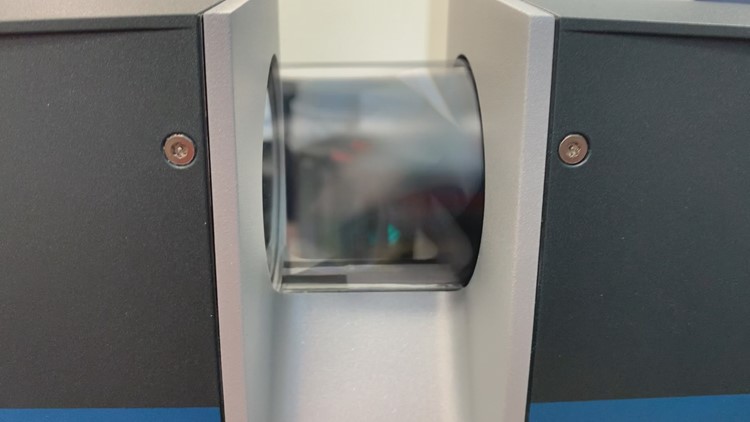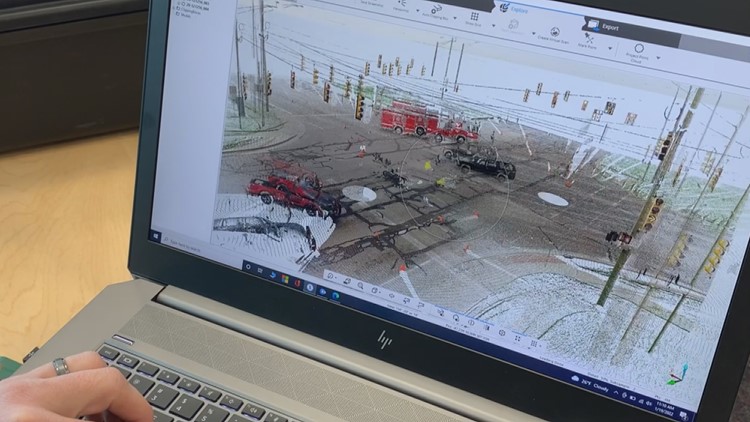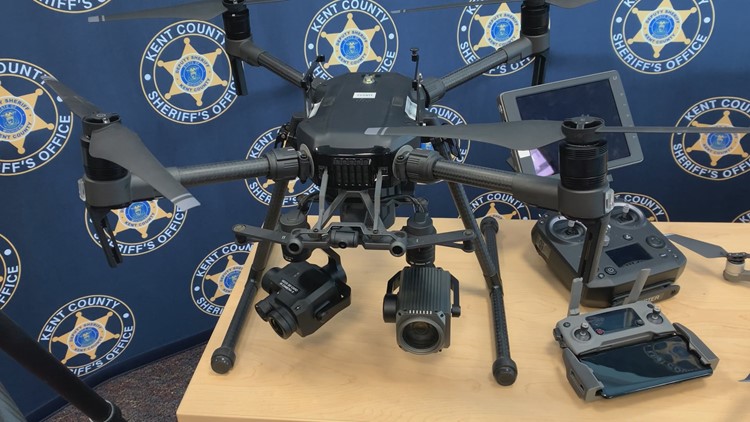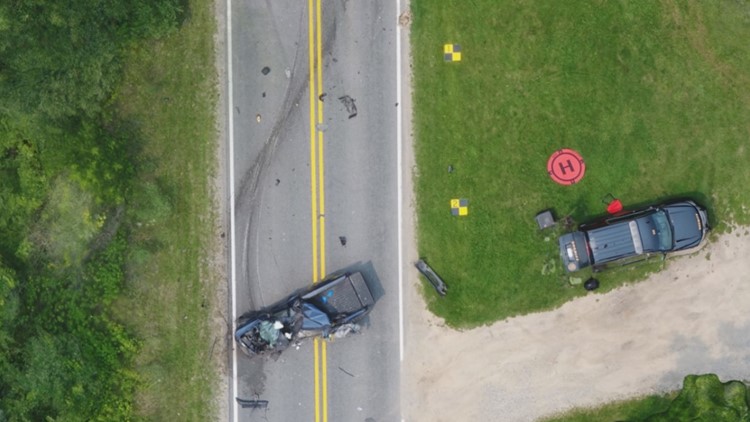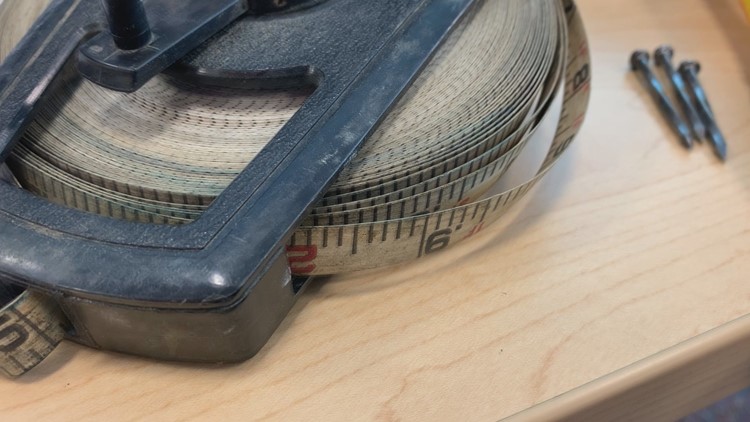KENT COUNTY, Mich. — Laser beams and state-of-the-art computer imaging have revolutionized how investigators process the thousands of traffic crashes that fall under Kent County’s jurisdiction on an annual basis.
“These are tragic incidents for the folks involved,” Sgt. Eric Brunner related. “The better job we can do when that moves to court or civil litigation to help reflect what happened and bring closure to that, that's a part of these.”
The Kent County Sheriff’s Department recently added a laser scanner and sophisticated drone technology to its roster, equally effective in the midst of both sprawling accident investigation sites and compact crime scenes.
Next-gen technology boosting accuracy, saving time in Kent Co. crash investigations
In terms of both time and accuracy, the contrast between analog old school--tape and handwritten measurements used to triangulate relative positions—and next generation technology, the Department explained, is virtually night and day.
“It's really almost an apples to oranges comparison, because of how much better this technology allows us… how much more accurate it allows us to be,” Sgt. Ryan Dannenberg explained.
Augmented by drone footage, the Department’s state-of-the-art laser scanner maps the scene, creating what’s known as a point cloud: an interactive view populated by tens of millions of different data points.
In a field that’s driven by information, it’s not only millimeter accurate, the technology enables investigators to collect reams more information in a fraction of the traditional time frame.
“Within a couple hours, you’re plotting a hundred points, maybe,” Sgt. Dannenberg related. “Within 40 minutes, I could have 30-40 million points.”
Even more mind boggling, the scanner device simultaneously takes digital snapshots which a computer then automatically stitches together and combines with point cloud data.
The innovation allows users to move seamlessly through the scene in digital form.
The technology has so much potential, the Department said, they’re still determining where its limits lie and the work of the future could shoot well beyond reconstructing crashes and crime scenes with laser precision.
The scanner cost $40-thousand, which came from grant money.
►Make it easy to keep up to date with more stories like this. Download the 13 ON YOUR SIDE app now.
Have a news tip? Email news@13onyourside.com, visit our Facebook page or Twitter. Subscribe to our YouTube channel.

